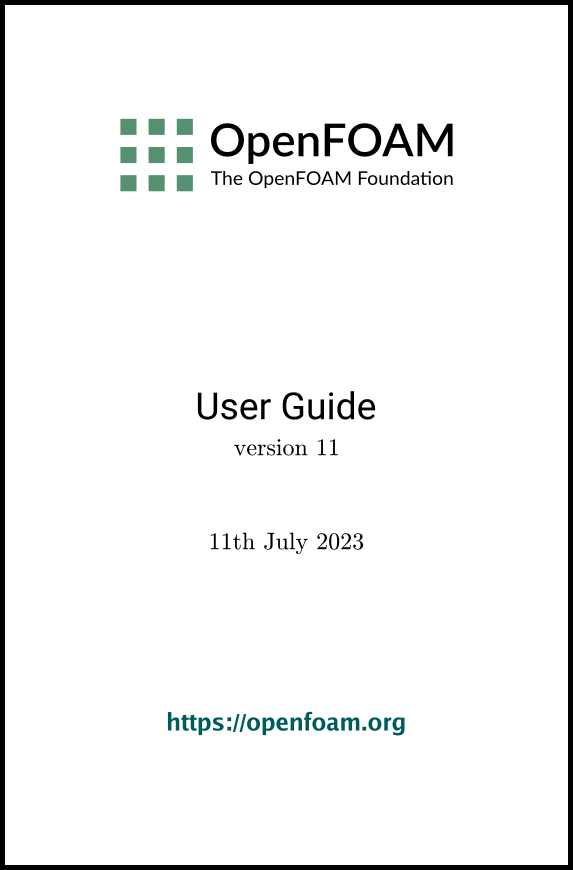[version 13][version 12][version 11][version 10][version 9][version 8][version 7][version 6]
Chapter 6 Boundary conditions
Boundary conditions are specified in field files, e.g. p, U, in time directories. The structure of these files is introduced in sections 2.1.4 and 4.2.8 . They include three entries: dimensions for the dimensional units; internalField for the initial internal field values; and, boundaryField where the boundary conditions are specified. The boundaryField requires an entry for each patch in the mesh. The patches are specified in the boundary file; below is a sample file from a 2D incompressibleFluid example in OpenFOAM.
5
(
outlet
{
type patch;
nFaces 320;
startFace 198740;
}
up
{
type symmetry;
inGroups List<word> 1(symmetry);
nFaces 760;
startFace 199060;
}
hole
{
type wall;
inGroups List<word> 1(wall);
nFaces 1120;
startFace 199820;
}
frontAndBack
{
type empty;
inGroups List<word> 1(empty);
nFaces 200000;
startFace 200940;
}
inlet
{
type patch;
nFaces 320;
startFace 400940;
}
)
17
18internalField uniform 0;
19
20boundaryField
21{
22 inlet
23 {
24 type zeroGradient;
25 }
26 outlet
27 {
28 type fixedValue;
29 value uniform 0;
30 }
31 up
32 {
33 type symmetry;
34 }
35 hole
36 {
37 type zeroGradient;
38 }
39 frontAndBack
40 {
41 type empty;
42 }
43}
44
45// ************************************************************************* //
The boundaryField is a sub-dictionary containing an entry for every patch in the mesh. Each entry begins with the patch name and configures the boundary condition through entries in a sub-dictionary. A type entry is required for every patch which specifies the type of boundary condition. The examples above include zeroGradient and fixedValue conditions corresponding to generic patches defined in the boundary file. They also include symmetry and empty types corresponding to equivalent constraint patches, e.g. the up patch is defined as symmetry in the mesh and uses a symmetry condition in the field file.
For details about the main boundary conditions used in OpenFOAM, refer to Chapter 4 of Notes on Computational Fluid Dynamics: General Principles.

